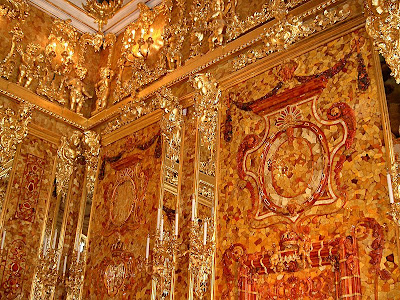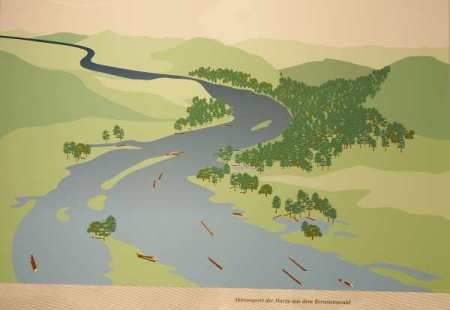| Main » Articles |
| Total entries in catalog: 57 Shown entries: 1-10 |
Pages: 1 2 3 4 5 6 » |
 Amber is as old as time itself, dating back millions of years. And yet,
it is still believed in today and used for its magnificent healing power
for treating joint pain, arthritic ailments, and even teething pain for
children. Baltic amber is also used in the cosmetics industry and in
other fields as well. Amber is as old as time itself, dating back millions of years. And yet,
it is still believed in today and used for its magnificent healing power
for treating joint pain, arthritic ailments, and even teething pain for
children. Baltic amber is also used in the cosmetics industry and in
other fields as well. |
 There can be subtle shades and combinations of various
colors with varying hue. Baltic Amber comes in green, honey, red,
yellow, cognac. There can be subtle shades and combinations of various
colors with varying hue. Baltic Amber comes in green, honey, red,
yellow, cognac. |
 As with other imitation gems labeled "manmade” or "created”, scientists
found ways in the 19th century to synthesize precious natural materials
into copies of varying inferior quality. As with other imitation gems labeled "manmade” or "created”, scientists
found ways in the 19th century to synthesize precious natural materials
into copies of varying inferior quality. |
 The Amber Room's seizure and subsequent disappearance at the close of WW
II is arguably the greatest jewel heist ever pulled off- if only on the
grounds the chamber itself was the world's biggest jewelry box, turned
inside out. Whether or not it somehow yet survives to rise again like
raw amber churned up in a storm-tossed sea remains unanswered still.
Conspiracy theories abound. The Amber Room's seizure and subsequent disappearance at the close of WW
II is arguably the greatest jewel heist ever pulled off- if only on the
grounds the chamber itself was the world's biggest jewelry box, turned
inside out. Whether or not it somehow yet survives to rise again like
raw amber churned up in a storm-tossed sea remains unanswered still.
Conspiracy theories abound. |
|
Record on the statuette "The Amber Gallerist of the year 2001 - Kazimieras Mizgiris" |
 Amber has very different shapes: small droplets, similar to fresh honey
drops, or large pieces, like a human brain, a skull or an egg. Amber has very different shapes: small droplets, similar to fresh honey
drops, or large pieces, like a human brain, a skull or an egg. |
|
Scientists are interested in amber because of the remains of flora and fauna. Amber inclusions are like snapshots made 50 million years ago, which give a possibility to study behavior of some species, the relationships between them. Insects got into the resin in unbelievable moments: laying eggs, mating, getting out of cocoons, spiders spinning their web or catching a prey; swarms of flies, mosquitoes or termites, which got into resin during wedding flights. |
 Amber is mentioned even in the 10th century BC in Assyrian cuneiform. It says that in the sea, where Northern winds are changing (Persian
Gulf), his (king’s) merchants gather pearls, and in the sea, where
Northern Star shines (Baltic), they fish amber. In about 600 years BC
Ezekiel describes king Tyre’s clothing decorations, and mentions amber jewellery. Amber is very often mentioned in Greek literature. Amber is mentioned even in the 10th century BC in Assyrian cuneiform. It says that in the sea, where Northern winds are changing (Persian
Gulf), his (king’s) merchants gather pearls, and in the sea, where
Northern Star shines (Baltic), they fish amber. In about 600 years BC
Ezekiel describes king Tyre’s clothing decorations, and mentions amber jewellery. Amber is very often mentioned in Greek literature. |
 We can only guess when people started using amber as jewellery or amulet
raw material giving it magical meaning. It is known that it was treated
with flint knives, cutters, scrapers, burr grinding stone and sand. The
oldest known amber article was created at the end of the Old Stone Age
(8 chiliad BC). It was an amber plate found in reindeer hunting camp
near Hamburg. Ancient
amber is rich in examples of art in many European museums. They possess
amber of each period of the history beginning with the Neolithic and
ending today, ornaments and other articles show a great popularity of
amber and its wide usage in applied decorative arts. We can only guess when people started using amber as jewellery or amulet
raw material giving it magical meaning. It is known that it was treated
with flint knives, cutters, scrapers, burr grinding stone and sand. The
oldest known amber article was created at the end of the Old Stone Age
(8 chiliad BC). It was an amber plate found in reindeer hunting camp
near Hamburg. Ancient
amber is rich in examples of art in many European museums. They possess
amber of each period of the history beginning with the Neolithic and
ending today, ornaments and other articles show a great popularity of
amber and its wide usage in applied decorative arts. |
 "Only the amber, rubbed and warmed up by hands, attracting mustard seeds is considered to be real.” (Tao Chuncinas 452-536) |

 "Amber dripped from a pine, which is unknown to us.
This pine grew near the various palm trees, sweet chestnuts, eucalyptus,
magnolia, oak, juniper and beech. Amber is a fruit of an ordinary tree,
but it is eternal”
"Amber dripped from a pine, which is unknown to us.
This pine grew near the various palm trees, sweet chestnuts, eucalyptus,
magnolia, oak, juniper and beech. Amber is a fruit of an ordinary tree,
but it is eternal” Wolfgang Weitschat (a professor of University of Hamburg Geology-Paleontology Istitute)
Wolfgang Weitschat (a professor of University of Hamburg Geology-Paleontology Istitute) 